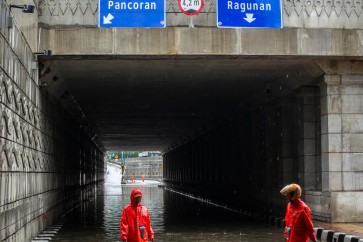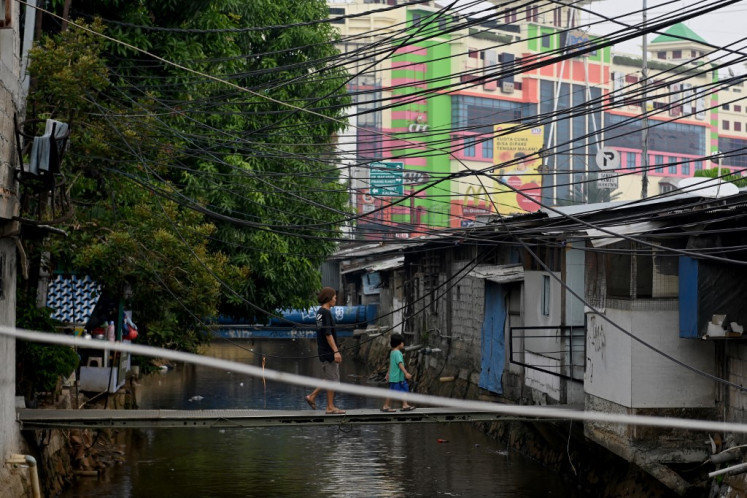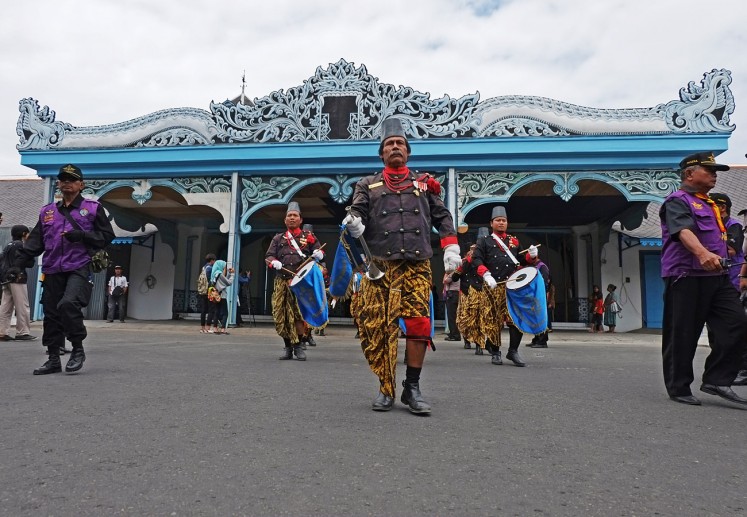Missing pieces needed to revive oil and gas sector
The future of Indonesiaâs oil and gas industry is in peril
Change text size
Gift Premium Articles
to Anyone

T
he future of Indonesia's oil and gas industry is in peril. Since the early 2000s, the resource-rich country has been experiencing a persistent annual oil production decline of 4 percent, significantly underperforming relative to most producing countries.
Natural gas was once expected to be the savior of Indonesia's industry before its production and reserves started to decline a few years ago. The newly formed National Exploration Committee (KEN) has recently proposed several recommendations to boost reserves and hence production.
However, the authors believe that the recommended actions are not enough to revitalize the industry, and have therefore proposed solutions that complement KEN's recommendations.
The continued oil-production decline is mainly down to fields maturing and a downtrend in discoveries of new reserves. Indonesian oil production only is around 800,000 barrels per day (bpd), barely half the 1.4 million bpd production in 2000.
The reserves-replacement ratio is even more worrisome, averaging merely 75 percent over the same period, which means a quarter of oil produced is not replaced. Projecting the future from these numbers alone, oil production will tumble to around 500,000 bpd by 2025 before ceasing altogether by 2050.
Natural gas production is in a better situation, but only because many believe that it has not reached its peak.
Production and reserves increased steadily until 2010. Additional reserves have been identified, but overall production has not improved much since then.
The critical point, however, will come when most of the newly developed gas fields are producing at maximum capacity. Concurrent with rising demand for natural gas, these fields may start to experience rapid decline.
The projected supply then may not fulfill demand if extra efforts to maintain and/or increase the reserves-replacement ratio do not perform as expected.
The authors identify three categories of problem that hinder development of the oil and gas industry. The first is technical impediments. The Indonesian oil and gas industry is generally divided into two areas: western and eastern. The successful evolution of this industry in the early 1900s was centered on the west of the country, but fields there are aging.
Production costs are increasing at a dizzying rate as oil-and gas-producing wells get older. This is reflected in a relatively high average production cost of about US$20 per barrel oil equivalent.
The novel technique of implementing massive tertiary oil recovery technology in aging fields, known as enhanced oil recovery, is always hit hard by volatility in oil prices and lower-than-expected yields.
As the search for new oil and gas discoveries shifts to the country's east, the landscape becomes more challenging than ever. It is deeper, with an unpredictable climate and, most importantly, geologically arduous. More specifically, the current state of technology in the Indonesian oil and gas industry is still insufficient to deal with increasingly demanding conditions.
The second problem category is the lethargic exploration sector. According to a 2014 report by oil and gas regulatory body SKKMigas, exploration investment in non-production working areas account for only 2 percent of the industry's total revenue.
The third category is unpredictable and complex regulation. The resources sector in Indonesia is infamous for being erratic and inconsistent. It also lacks support from local authorities and supporting industries.
These inconsistencies and difficulties create an unhealthy environment for both domestic and foreign investors, support from both of whom is essential to the industry's growth and continuation.
Therefore, to revitalize the Indonesian oil and gas industry, the authors propose the following solutions to the respective problems.
The first solution is technological breakthroughs. In the absence of cutting-edge technology, resolving problems related to aging fields will only slightly improve production and reserves.
Furthermore, as the search for new discoveries intensifies in a more challenging terrain that may differ significantly from other parts of the world, the industry is desperate for new and reliable technology specifically suited to exploration in Indonesia. The Indonesian government has to engage and collaborate with the private, academic and research sectors to boost research and development in search of technological breakthroughs.
Second, exploration needs to be initiated and incentivized. The SKKMigas report revealed declining interest from investors to participate in the search for new discoveries. To counter this decline, local authorities should develop initiatives to boost exploration.
The government has to actively collaborate with exploring entities and provide extra incentives to revive the zest for exploring. New discoveries will improve the reserve-replacement ratio and thus the reserves level.
Third, consistent and supportive regulations must be put in place. A consistent approach to regulation is crucial for the industry.
Unnecessary bureaucratic chains have to be eliminated, permit and license application procedures have to be simplified and local authorities must provide assistance in all activities related to exploration and production.
A faster, simpler and more integrated process is sure to encourage domestic and foreign investors to venture once more into the industry.
We identify two fundamental elements that will ensure the revitalization of the national oil and gas industry. The first element is a non-profit agency with a mission to provide stewardship in identifying and facilitating the most appropriate and necessary exploration, research, development and deployment of innovative technologies.
The agency should be comprised of experts from across the private sector, academia, research institutions and other established national agencies.
This partnership forms a platform to provide the cutting-edge technology R&D activities and exploration initiatives much needed in the nation's oil and gas industry.
The research should focus on technologies to innovatively explore untouched regions, reduce finding, development and production costs and enhance recovery from mature fields.
The second element is a sustained financial source that serves to safeguard the continuation of the revitalization effort. In the oil and gas industry, this type of financial source is widely known as a petroleum fund, and has been used in many regions to absorb income from a short-lived resource such as oil and natural gas.
There are two common ways to boost the value of a petroleum fund.
First, the fund can be reinvested in capital assets including government bonds, equities and real estate, allowing it to grow through returns on assets.
Second, the fund can be reinvested in R&D. This approach is commonly taken by countries where large amounts of resources are believed to be available but which face technical and economic challenges in development.
The fund has to act as a long-term solution for securing the country's future energy needs. It needs to trigger petroleum-exploration activities, promote technological development and deployment and improve infrastructure to support oil and gas activities.
The sources of the fund must be secured in the long term. The fund's governance and management have to be properly regulated within a constitutional framework and should be operated in a transparent fashion.
____________________________
Fadli Rahman is a PhD candidate in mineral and energy economics at Colorado School of Mines, the US. Ardhi Lumban Gaol is a PhD candidate in petroleum engineering at Texas A&M University, also in the US, and a candidate for assistant professor in petroleum engineering at Bandung Institute of Technology (ITB).









